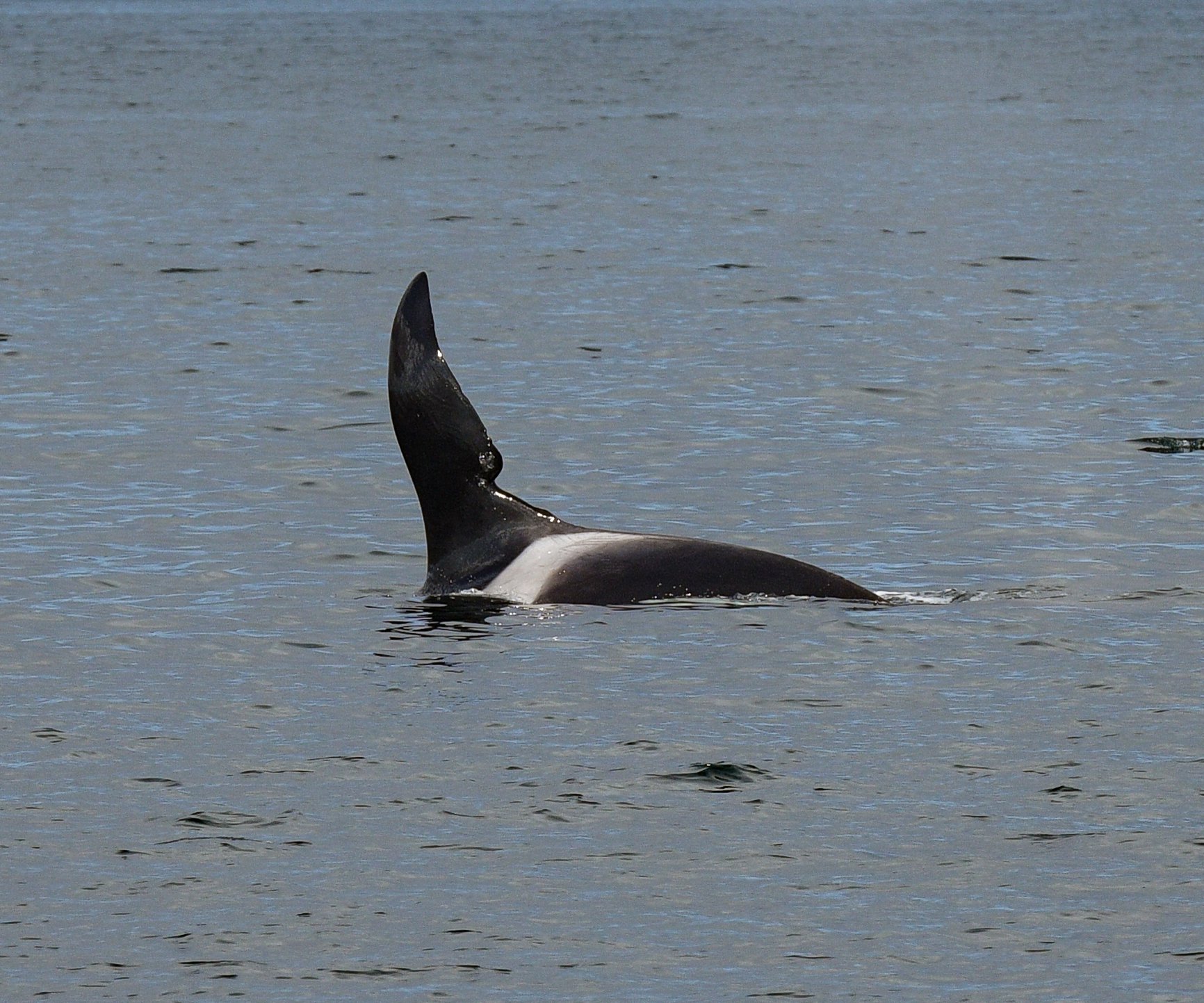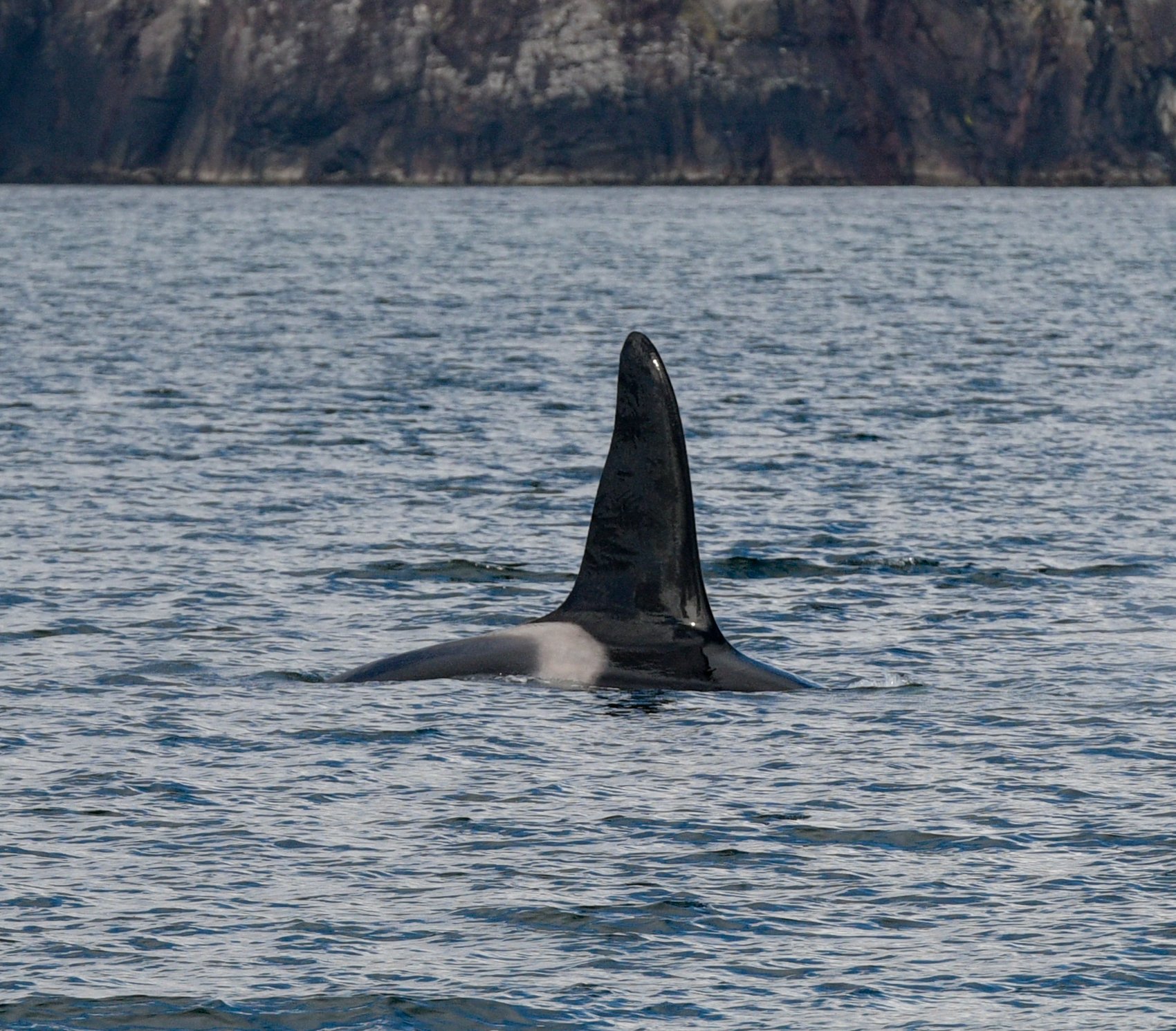Telling the Tale of the West Coast Killer Whale
Aquarius and John Coe surface in front of Ardnamurchan Lighthouse
The tale of the West Coast Community of killer whales will be told in a new film by Director, George Hoagy Morris. Over the coming weeks, George will take to the water, attempting to capture footage of the elusive West Coast Community. Inspired by the story of this unique population of killer whales, the film will share their tragic story with new audiences.
“The story will be told through the eyes of the local population of shore watchers, boat operators and scientists responsible for monitoring and loving this enigmatic pod. A small team and I have been working closely with organisations such as HWDT for over two years and are over the moon to finally be filming. We have been collecting never seen archive footage of the West Coast Community and our aim is to make a film that captures the love and spirit of what these animals mean to so many, but also talks frankly about issues facing marine life in the oceans surrounding our island home.”
The West Coast Community are a special group of killer whales, different from any other killer whales recorded off Scottish coast. They look different (about a metre bigger with distinguishable eye patch orientation), have a more specialised diet and it seems they never interact with other killer whales seen off our shores.
In recent years, only the two old males - John Coe and Aquarius - have been reported, prompting fears they are the last remaining members of this group. In 2016, the last female recorded – Lulu - washed ashore on the Isle of Tiree and was found to be one of the most heavily polluted killer whales ever recorded.
The West Coast Community have been spotted off Irish, Welsh and, in 2021 for the first time, English shores, however most of the sightings have been made off Scotland’s west coast. If you have any spotted a killer whale – past or present – please report the sighting through Whale Track, HWDTs free and user-friendly smartphone app or via the website www.hwdt.org.
“Over the past 30 years, the Hebridean Whale and Dolphin Trust (HWDT) has been gathering sightings data of the West Coast Community and working with scientists and other organisations to better understand this unique group of killer whales. Most of what we know about animals like John Coe is thanks to the public reporting when and where these killer whales have been spotted and sending in photographs through HWDT’s citizen science sightings scheme, Whale Track. There’s still so much to learn, and every sighting adds another important piece to the puzzle.”
When HWDT records began 10 individuals of the West Coast Community were identified– both male and female. However, with only two old bulls thought to remain, encountering these animals is incredibly special and memorable.
Floppy Fin and Nicola - members of the West Coast Community who have not been reported in many years - this photo was taken during a monitoring expedition on board HWDTs research vessel, Silurian in 2004
“It was always a dream of ours to see the West Coast Community of killer whales but we realised that, in order to have the greatest chance, we needed to buy a bigger boat… so we did! It was the best decision that we ever made. Not long after our maiden voyage, we were lucky enough to watch John Coe and Aquarius travelling in perfect synchronicity along the south coast of Mull, a stone’s throw from our home. It’s impossible not to feel sadness along with elation when encountering this pod, given the circumstances, but they were happily oblivious to the tears in our eyes!””
George is inviting people who have stories or memories about the West Coast Community to get in touch at george@fathomfilms.co.uk. George wants to hear from people who have had encountered these special animals, moreover he is keen for anyone who has footage or photographs – particularly historic – to get in touch for a chat.
John Coe, Moneypenny and Lulu encountered during an expedition on board Silurian, in 2014; one of the last times that Lulu was seen alive
George has already begun filming interviews, but the main shoot to try and film the West Coast Community starts on the 7th of August will run until the end of September. Based in Tobermory but with plans to film all over the west coast – including sightings ‘hotspots’ such as Neist Point on the Isle of Skye and Ardnamurchan Lighthouse, the most westerly point on the UK mainland.
George has obtained a filming licence from NatureScot and WiSe training has been provided by HWDT to his production team on how to behave responsibly when in the presence of marine mammals. George will be identifiable while on the water as the vessel he will use will be clearly marked. The vessel George will use is a large black, grey and orange RIB called ‘Ghost’ and has kindly be provided by The Captain Paul Watson Foundation (formally known as Sea Shepard UK).
Alongside capturing footage for his film, George and his team will help support HWDT’s long-term research by gathering data through HWDTs app, Whale Track, recoding each encounter with a whale, dolphin, porpoise or basking shark. George will also collect photographs of any animal encountered to allow individual animals to be identified using a technique called Photo-Identification.
Photo-Identification uses distinguishing features – such as John Coe’s dorsal fin – to identify individuals, placing them at a location in time. This technique allows researchers to better understand the size of a population and range, also it can help age animals and look at social interactions between individuals.
There are only two known recordings of the vocalisations – or ‘voices’ - of the West Coast Community killer whales. George and his team will deploy one of HWDT’s hydrophones (an underwater microphone) to attempt to capture some more recordings of the West Coast Community.





